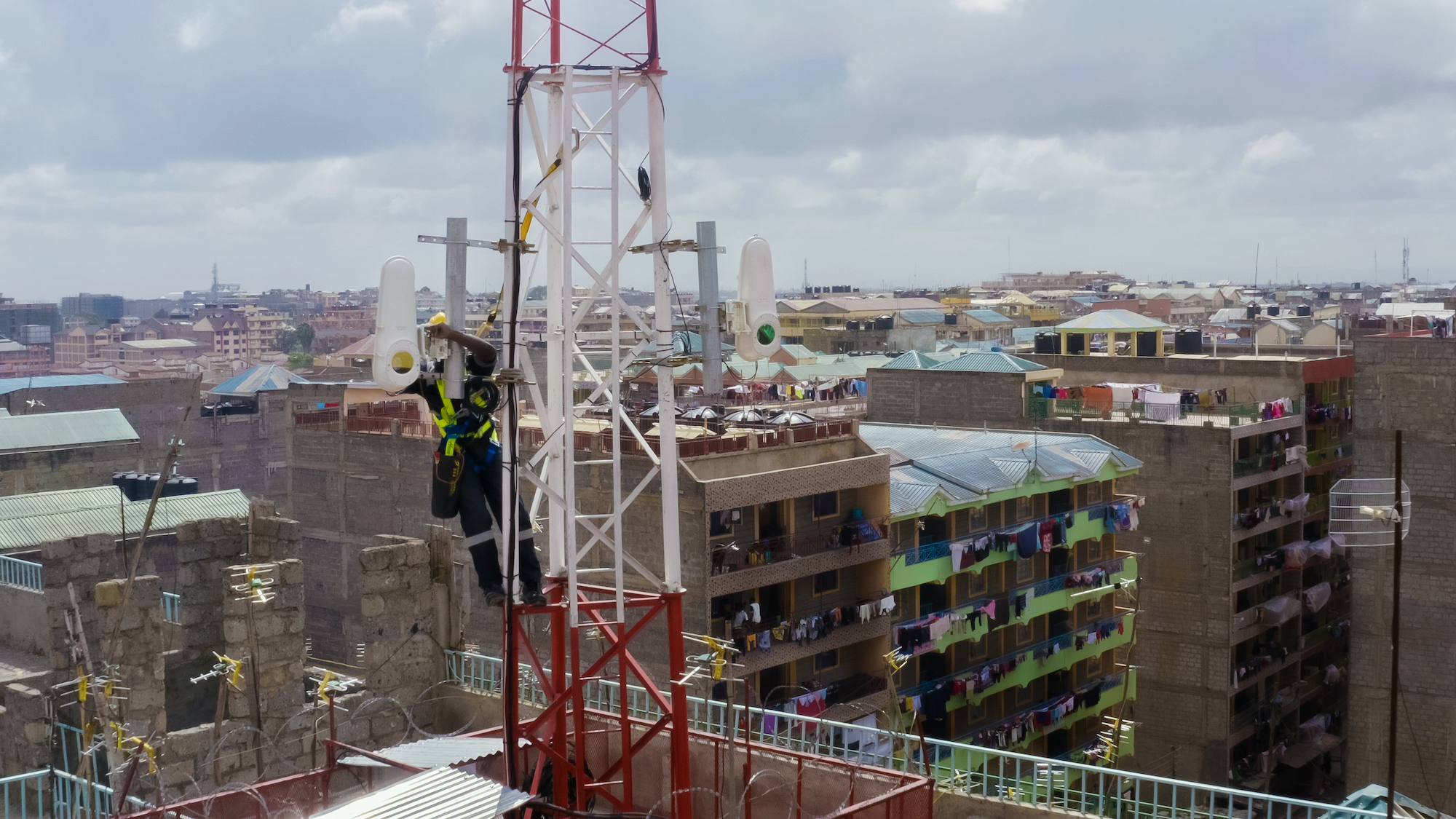

The standard way to move internet data quickly is through fiber lines, but in the Congo, engineers are experimenting with zapping it through the air when a river’s in the way.
Alphabet’s research and development subsidiary, X, announced on Thursday that it is now beaming high speed internet across the Congo River as a part of an initiative called Project Taara. Alphabet, Google’s parent company, partnered with Liquid Intelligent Technologies to bridge a 3-mile connectivity gap between Brazzaville in the Republic of the Congo and Kinshasa in the Democratic Republic of Congo.
The conventional way of providing broadband connectivity is traditionally through a network of cables and wires, but that approach is “five times more expensive in Kinshasa because the fiber connection has to travel more than 400 kms to route around the river,” Baris Erkmen, director of engineering for Taara, writes in a blog post. Additionally, due to the river’s depth and speed, using an underwater fiber to bridge the gap would be difficult and pricey.
So instead of using wires to link up its network, Taara shoots narrow and invisible beams of laser light between two towers at either side of the river to establish wireless optical communication at “fiber-like speeds.” To create a link, the tower terminals swivel to search for each other, and once they detect each other’s light beam, they lock into position “like a handshake” to form a “high-bandwidth connection.”

[Related: How Google is building the fastest internet cable to cross the Atlantic]
According to Erkman, after Taara’s over-the-river links were installed, they helped relay around 700 TB of data in 20 days, with 99.9 percent availability, which he compares to “watching a FIFA World Cup match in HD 270,000 times.”
Erkman notes in the blog post that the team realizes that different weather and other environmental conditions could affect the reliability of the service. And he acknowledges that this type of tech would probably not work as planned in a city like the notoriously foggy San Francisco, but “there are many places around the world with ideal weather conditions for Taara’s links.” In conjunction with the tech, the team is also developing network planning tools that estimate how well the wireless optical communications will work in a given location based on factors like weather. That will help them pinpoint the best places to deploy these links.
For years, industry experts have been skeptical about widespread wireless optical communications because the signal reliability hinges heavily on favorable weather conditions. Other events that can compromise signals include service interruptions due to birds flying in front of the beam or monkeys jostling the terminals, which actually happened during Taara’s pilots in India, Erkmen writes.
In response, the team built the terminals to auto-adjust their laser power, processing capabilities, and positioning to maintain a good connection even in sudden, unpredictable chaos.
Project Taara’s mission is to use this wireless optical communication technology to extend high-speed internet to the 4 billion or more people around the world who lack access, especially those in remote communities. Even in the US, there is a growing digital divide between urban and rural populations. On average, rural adults report that they are less likely to have internet at home, own smartphones, laptops, and computers compared to those who live in the suburbs or in big cities.
This isn’t the first Google-related project to try to bring the internet to remote areas by beaming it through the air. Alphabet first aired this idea in a 2017 project called Loon. Loon employed a collection of floating cell towers carried by stratosphere-roaming balloons to transmit LTE signals to people in disaster zones or rural areas. But it was formally grounded at the start of this year. Its creators explained in a blog post that “the road to commercial viability has proven much longer and riskier than hoped.”
The balloon system may have ultimately deflated, but the idea of fiber-less connection stuck, and X engineers have repurposed the beaming lasers in this new venture.
Over the years, X has run a number of pilots in India, Puerto Rico, Mexico, and Sub-Saharan African countries like Kenya. This new trial in the Congo marks the first commercial rollout of the Taara technology in Africa.
